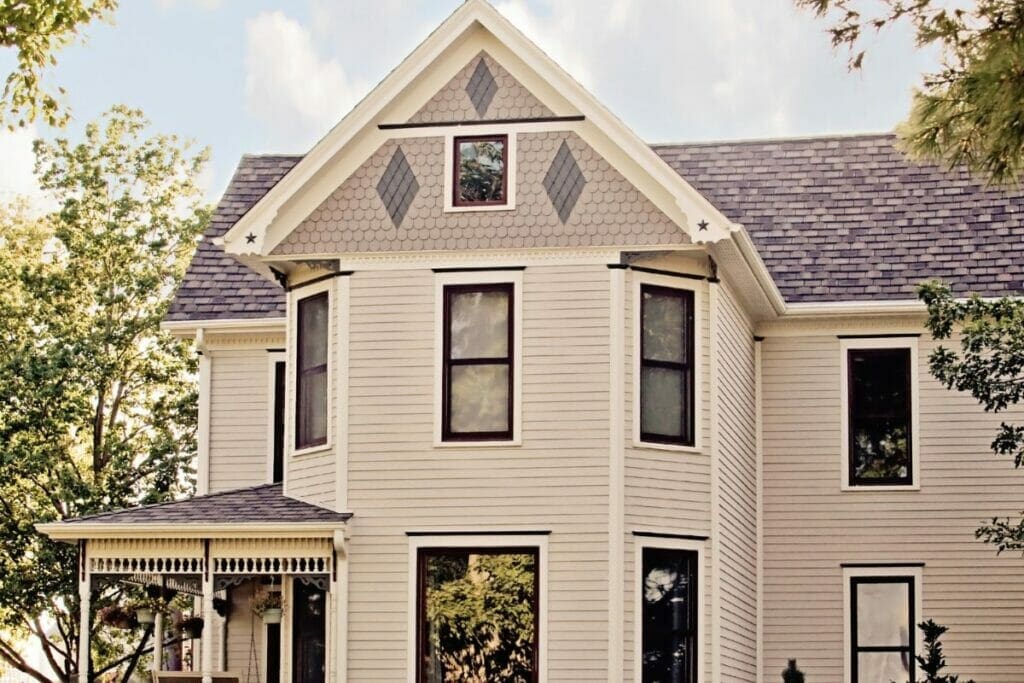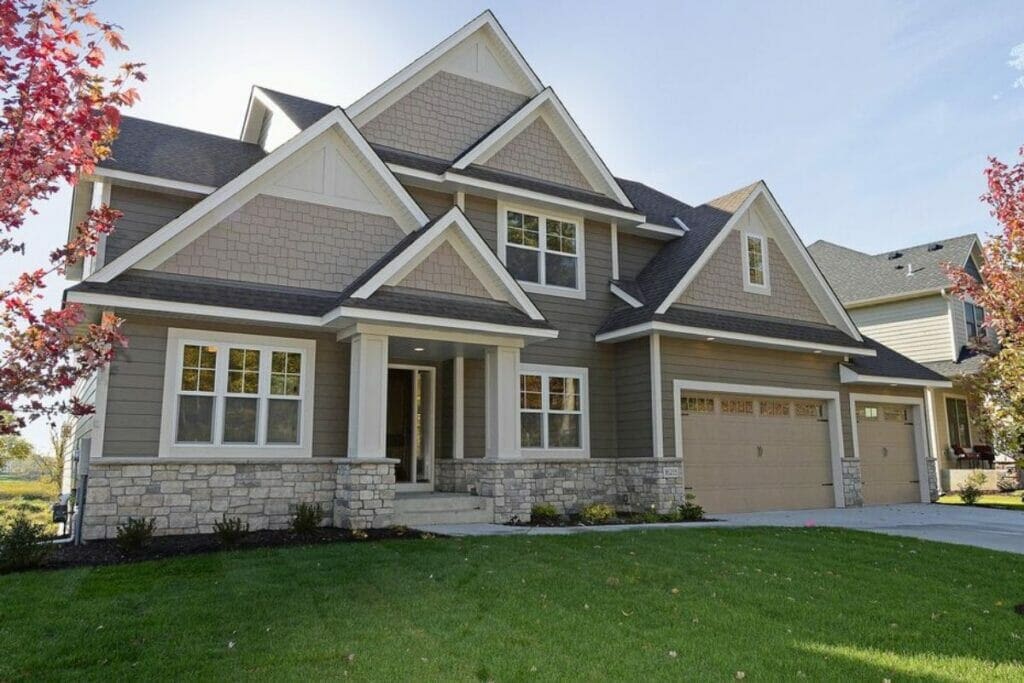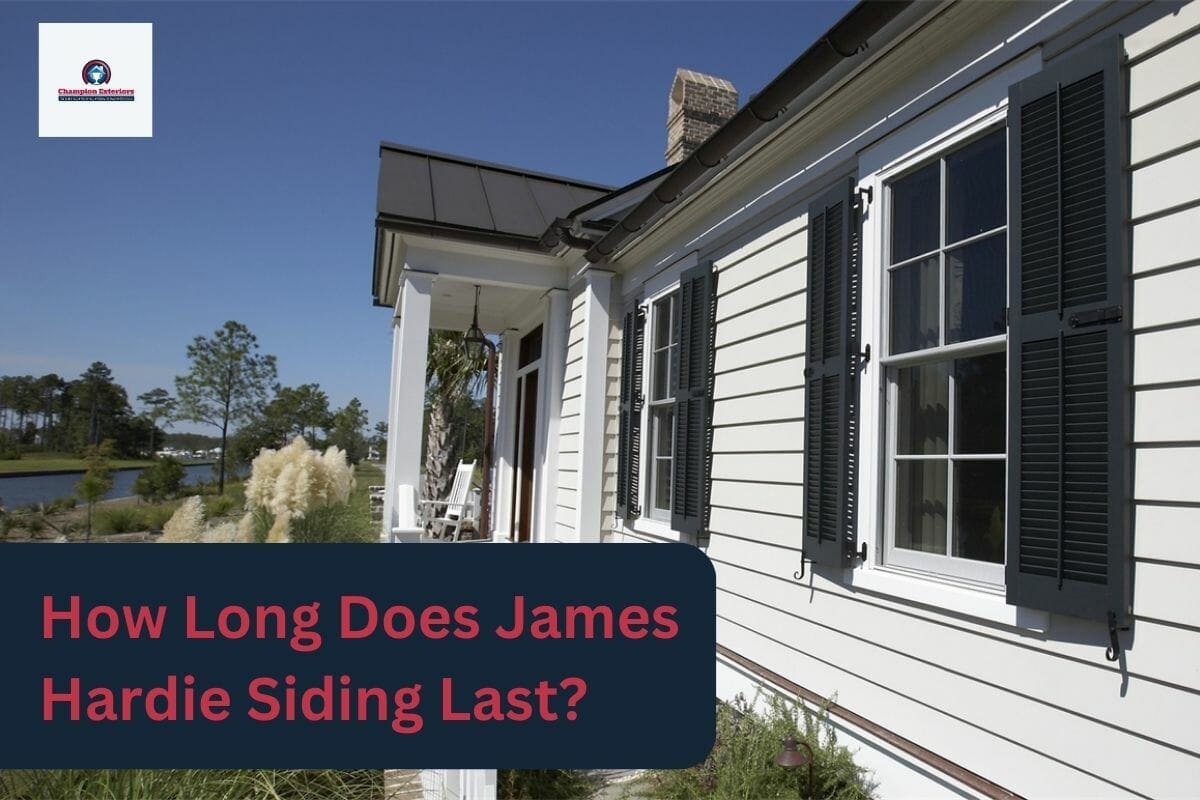Did you know that James Hardie siding is one of the most durable siding brands available in the industry? Known for its exceptional quality, James Hardie fiber cement siding offers impressive durability and a long lifespan. This blog post will address the average lifespan of James Hardie siding, the factors that contribute to its durability, and how to know when it’s time to replace your siding. We will also discuss the cost of a James Hardie siding replacement and provide tips on how to extend the lifespan of your siding.
The Average Lifespan Of James Hardie Siding

James Hardie siding is renowned for its strength, and it has a lifespan that can surpass many other types of siding. While the exact lifespan can vary depending on various factors, with proper maintenance and care, James Hardie siding can last for several decades. In fact, James Hardie offers a 30-year warranty on their siding products, which demonstrates their confidence in the longevity of their siding.
Why Is James Hardie Siding So Durable?
James Hardie siding is made from a unique material called fiber cement. This composite material is composed of cement, cellulose fibers, and sand, resulting in a siding that is exceptionally strong and durable. The combination of these materials makes the siding resistant to many common issues that can affect other types of siding, such as rot, pests, and fire damage. These reasons contribute to making James Hardie siding one of the most durable and long-lasting siding options.
Excellent Moisture Resistance
One of the key factors contributing to the durability of James Hardie siding is its excellent moisture resistance. Unlike wood siding, which is prone to rot and decay when exposed to moisture, James Hardie siding is designed to resist even the harshest weather conditions. The fiber cement material resists moisture penetration, preventing issues like mold, mildew, and wood rot. This moisture resistance ensures that your siding remains intact and protects your home for many years.
Fire Resistance
Another notable feature of James Hardie siding is its fire resistance. While vinyl and wood siding can contribute to the spread of a house fire, James Hardie siding is non-combustible. It does not ignite when exposed to flames and can help protect your home from fire damage. This fire resistance adds an extra layer of safety and peace of mind for homeowners.
Impact Resistance
James Hardie siding is also highly resistant to impact, making it a great choice for areas prone to severe weather conditions. Unlike vinyl siding, which can easily crack or dent upon impact, James Hardie siding can withstand hail, high winds, and flying debris. Its thick and dense composition makes it more resilient and less prone to damage. This impact resistance ensures that your siding remains intact and maintains its aesthetic appeal for years to come.
James Hardie siding also comes in a wide variety of colors. If you’re interested in finding out more, check out this blog post.
Factors That Affect The Lifespan Of James Hardie Siding
While James Hardie siding is known for its durability, several factors can affect its lifespan. Understanding these factors can help you make the right decisions about maintenance and replacement.
Installation Quality
The quality of the siding installation plays a crucial role in determining the longevity of your James Hardie boards. It is important to hire a reputable and experienced siding contractor who specializes in James Hardie siding installation. Improper installation can cause issues such as water infiltration, which can significantly impact the lifespan of your siding. By ensuring proper installation, you can maximize the longevity of your James Hardie siding.
Climate and Weather Conditions
The climate and weather conditions in your area can also affect the lifespan of James Hardie siding. While James Hardie siding is engineered to withstand a variety of climates, extreme weather conditions can accelerate wear and tear. For example, areas with high humidity or frequent exposure to saltwater may require more frequent maintenance and inspections to ensure the siding remains in optimal condition.
Maintenance and Care
Regular maintenance and care are essential for preserving the lifespan of James Hardie siding. While the siding is low maintenance compared to other materials like wood or vinyl, it still requires some attention to keep it in optimal condition.
How To Know When It’s Time To Replace Your Siding
While James Hardie siding is designed to last for many years, there may come a time when replacement is necessary. Here are some signs that indicate it’s time to replace your siding:
Visible Damage: If you notice extensive damage to your siding, such as warping, cracking, or rot, it may be time for a replacement. Damaged siding not only affects the appearance of your home but can also compromise its protection against the elements.
Frequent Repairs: If you find yourself constantly repairing your siding due to ongoing issues, it may be more cost-effective to invest in a replacement. Constant repairs can be a sign of underlying issues that may require a comprehensive solution.
Energy Efficiency: If you notice a significant increase in your energy bills, it could be a sign that your siding is no longer providing adequate insulation. Upgrading to new, energy-efficient siding can help improve your home’s energy efficiency and reduce energy costs.
Ways To Extend The Lifespan Of Your Siding

While James Hardie siding is built to last, there are steps you can take to further extend its lifespan:
Regular Cleaning: Keep your siding clean by regularly removing dirt, debris, and mildew.
Prompt Repairs: Address any minor issues promptly before they escalate into larger problems. Repairing cracks, gaps, or damaged areas immediately can prevent more damage and extend the lifespan of your siding.
Proper Ventilation: Ensure that your home has proper ventilation to prevent excessive moisture buildup, which can lead to mold and rot. Proper airflow helps maintain the integrity of the siding and prevents it from becoming damaged.
Professional Inspections: Schedule regular inspections with a professional siding contractor to assess the condition of your siding and identify any potential issues. A professional can provide expert advice on maintenance and repairs.
By following these tips, you can maximize the lifespan of your James Hardie siding.
Conclusion
James Hardie siding is an excellent choice for homeowners seeking durable, long-lasting siding options. With its exceptional durability, moisture resistance, and fire resistance, James Hardie siding can provide reliable protection for your home for many years.
While the average lifespan of James Hardie siding can exceed 30 years, proper maintenance and care are essential for ensuring its longevity. By addressing any issues promptly, following maintenance guidelines, and consulting with a professional siding contractor when needed, you can enjoy the benefits of James Hardie siding for decades to come.
Hire New Jersey’s James Hardie Siding Contractors Today
If you want to install James Hardie siding on your home or office, it is best to contact a professional James Hardie siding contractor to install your exterior siding. If you live in New Jersey, call Champion Exteriors today and hire certified contractors for your siding installation. We are a team of experts who understand the nuances of siding and roof installation and want to help homeowners create a safe and protective home. Give us a call today at (609)-845-3576, and find out how we can help you!


